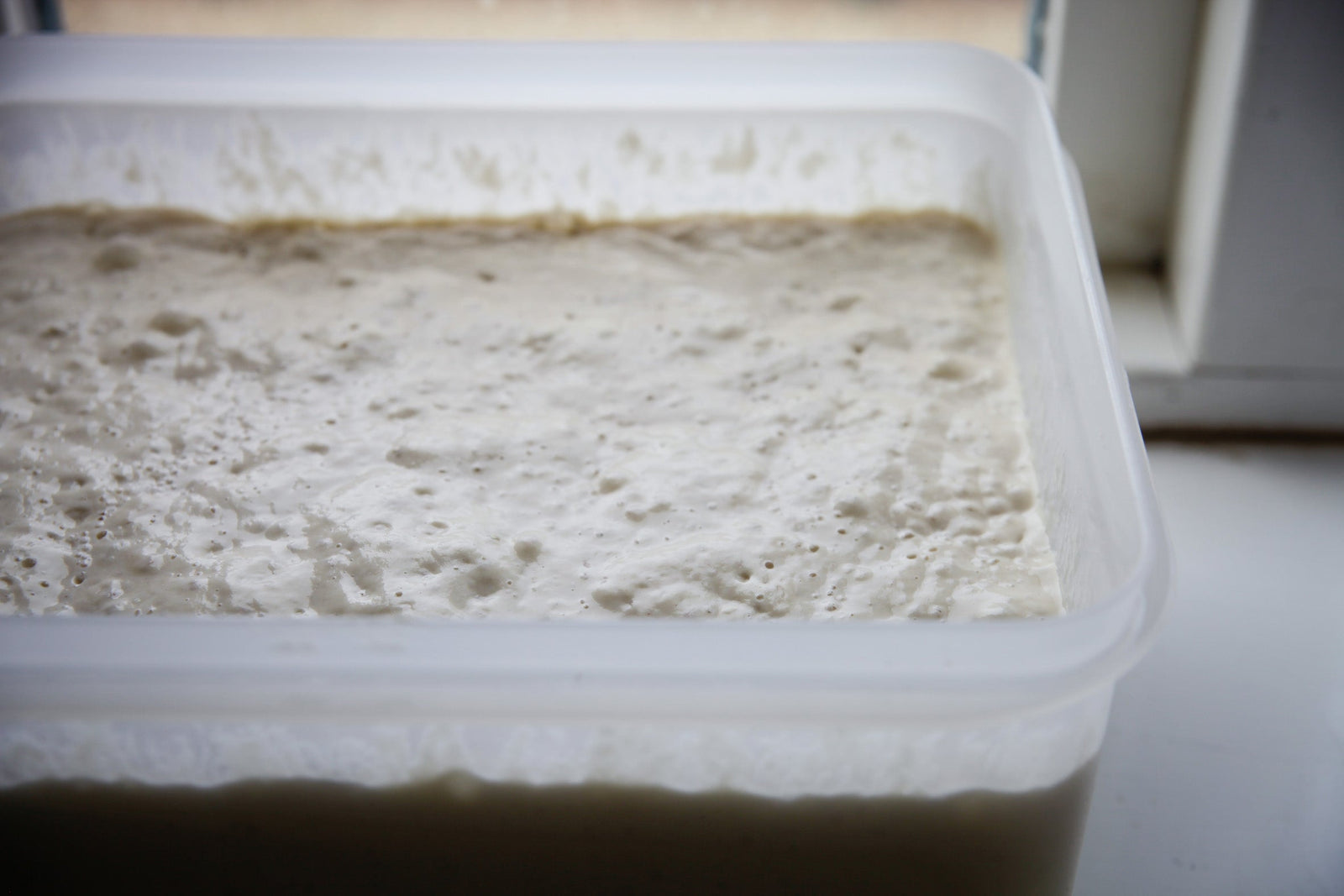FREE DELIVERY ON CHOCOLATE ORDERS OVER £25 | SHOP OUR 15th year anniversary collection
FREE DELIVERY ON CHOCOLATE ORDERS OVER £25 | SHOP OUR 15th year anniversary collection
SHOP CHOCOLATE
How to Feed & Maintain Your Sourdough Starter
by Joanna Brennan September 27, 2024 4 min read

Making and eating sourdough bread made at home is one of the most delicious uses of your time. The root of any successful sourdough loaf is a healthy and happy starter dough. The maintenance of a colony of yeasts and bacteria thriving in a suspension of flour and water is the single most important stage to master if you want to become a brilliant home baker. Here we are sharing the lessons we’ve learned over the years at Pump Street Bakery.
What is a sourdough starter?
If you mix the flour of almost any milled seed and water, then leave it in favourable conditions (more on this later) it will ferment, playing host to yeasts and bacteria in a “starter” dough, also known as a mother.
Typically at Pump Street we use wheat flour and rye flour to feed our starter doughs, and as the yeasts feed on the dough and multiply, they release gas which makes the dough rise. As the bacteria multiplies (specifically lactic acid bacteria and acetic acid bacteria) the dough gets its distinctive sour flavour and is protected from harbouring dangerous bacteria by the low pH levels.
Simply put, the bacteria is the ‘sour’ and the yeasts are the ‘dough’.
If you're just starting out and need help getting your sourdough starter going, you might enjoy our guide: How to Make a Sourdough Starter.
Why do I need to maintain and feed my sourdough starter?
Your sourdough starter is a living organism, or more accurately it is a collection of living organisms which need food to survive.
When you mix flour and water together and add it to the starter dough, the organisms feast and multiply. This depletes the floury paste of its nutrients. Temperature and time are essential elements here; left too long the multiplication slows and they can start to die as the starter becomes overly acidic and the yeasts will begin feeding on themselves.
You have to feed the starter to keep it active and balanced, it means that when you add your starter to your bread dough it will rise beautifully and taste fantastic.
Where should I keep my sourdough starter?
You can keep your starter in a variety of places but be aware that the temperature will affect how quickly it ferments and therefore how often you’ll need to feed it. It’s ok to keep it in the fridge and feed it every three or four days if you aren’t making bread, but if you are making sourdough regularly then keeping it around 25 degrees celsius will keep your yeast population happy and ready to make first rate loaves.
We recommend storing in the fridge in between bakes and getting it out a day or two before for some warmer feeds at around 18-24 degrees.
How often should I feed my sourdough starter?
If you keep your starter at room temperature, aim to feed it once a day. If you store it in the fridge, feeding every 3–4 days is usually enough. In both cases, consistency is what keeps the microbes content.
What ratio should I feed my starter?
When we talk about feeding ratios it can get a little complicated, or at least it can feel that way. There are two important ratios to keep in mind, firstly the amount of water compared to flour in each feed, and secondly the amount of new feed compared to the fermented starter dough.
A wetter starter will ferment faster. A drier starter will ferment slower. When at home we recommend a 1:0.6 ratio of flour to water which is slightly drier than most starters that tend to be equal parts flour to water.
The other way you can control the rate of fermentation is through the ratio of starter dough to feed. An easy way is to use equal parts starter dough and feed in a 1:1 ratio. However, you can slow this down by reducing the starter dough to a smaller fraction. You can go as low as 1:0.2 if the conditions are warm enough. We try to achieve a balance that sees our starter dough double in size within three hours.
A tip is to use an elastic band to mark the starter level right after feeding so you can determine when it has doubled.
A final word
Remember that humans have been making bread for over 6,000 years and there are as many ways of making a loaf as there are bakers. Find a way that suits you and your schedule.
Hopefully with these tips you can fine tune your own baking that reflects you and your personality, understanding not just what is happening, but also why, and how you might be able to exert some control over it.
Interested in Learning More About Sourdough?
Join us at a Pump Street Sourdough Workshop.
If you want to learn more about sourdough baking then why not come on one of our courses at the Pump Street Workshop? You’ll leave with fresh loaves, a jar of starter, and the confidence to bake at home.
Subscribe
Sign up to get the latest on sales, new releases and more …


